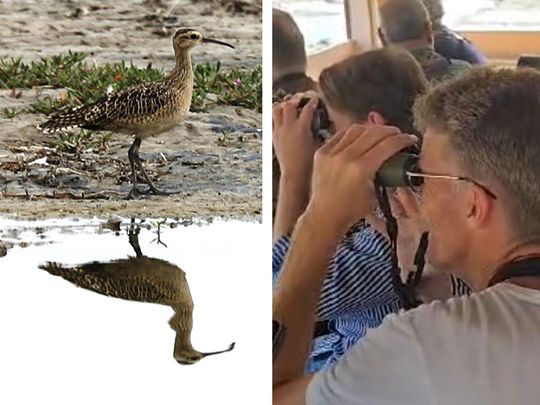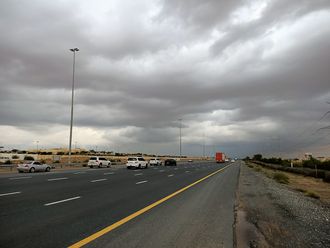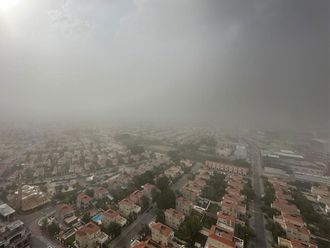
Dubai: A winged guest who has uncharacteristically arrived in the UAE has birders flocking together and become part of avian history.
The world’s smallest Curlew, known both as Little Curlew or Little Whimbrel, has been sighted in the first recording in the UAE, according to birders.
One of them Reza Khan told Gulf News: “This Quail or Myna-sized birds live in Siberia. Post-summer and after the annual breeding season, their entire population migrates to the coastal areas of Australia and New Zealand. By autumn, they start their return journey to Russian Siberia. There has virtually been no exception to this rule, barring last fortnight, when one of them happened to fly into Dubai.”
He said, “On March 20, Angolan birder Michael Mills had a stopover in the UAE, as many migratory birds do, on his way to Socotra Island in Yemen, for birding. This brought him down to Ras Al Khor Wildlife Sanctuary in Dubai for bird sighting and recording. Late afternoon, he spotted the Little Curlew, recognised its species and photographed it. He also shared the exciting information with his birding friends in the UAE.”

The news travelled like wildfire through the uaebirding alert and uaebirding WhatsApp forums. Everyone rushed to Ras Al Khor to see the bird.
Dr Khan said he himself was heading for some urgent family work in Jumeirah when the news broke. “The sun was already down to the line of the horizon diminishing my chance of visiting the site. But by 6.30am the next day, I was in the Mangrove Hide of the Ras Al Khor Wildlife Sanctuary. Soon, others birders started flocking the area as the sun kept its bout of rising undeterred.”
However, the telescopes and binoculars failed to locate the elusive vagrant bird.
As the birders suspected, it was possibly hiding behind a clump of 2 metres by 10 metres of freshly growing reed bed, some 15-20 metres away from the Mangrove Hide.

The wait for the Little Curlew was long but worth its while. “It was after mid-day that we got to see the enigmatic bird through our telescopes. We became a part of the history of the first record of the Little Curlew in the UAE,” said Dr Khan.
“All curlews/whimbrels are brownish birds with a scaly back. They have very long down-curved bills and long legs suitable for wading through shorelines. Their underside is paler or whitish. They seek out worms and small aquatic animals with their bills whose tips are sensitive,” noted Dr Khan.
He said the Little Curlew measures just 31 cm and weighs 175 grams. “It does not look like the largest wader - the Curlew, but other smaller waders such as Redshank or Greenshank. However, its bill is very much like the curlews and legs long and upright.”
According to the birders, the Little Curlew lives and breeds only in internationally known bird flyways such as the East Asian Australasian Flyway.
“It has been established that the majority of the Little Curlew population spends winter in Australia and to some extent in New Zealand. Traditionally, this curlew starts its return flight towards the breeding grounds in north-eastern Siberia in Russia by April. There, it breeds during May-August. By October, it starts its migration towards south with a view to reaching its final destination in the coastal areas of Australia,” said Dr Khan.
The Little Curlew covers a long distance in its to and fro journeys between Siberia and Australia, or even New Zealand. During passage, it crosses China and rarely Indonesia and the Philippines, as mentioned in the IUCN RED List.
In the natural process of migration of the Little Curlew, the Arabian Peninsula is farther west of the East Asia and Australia Flyways. The UAE and the Arabian Peninsula fall under the African-Eurasian Flyway. In more explicit projections, the birds passing over the Arabian Peninsula follow West Asia-East Africa as well, added Dr Khan.












